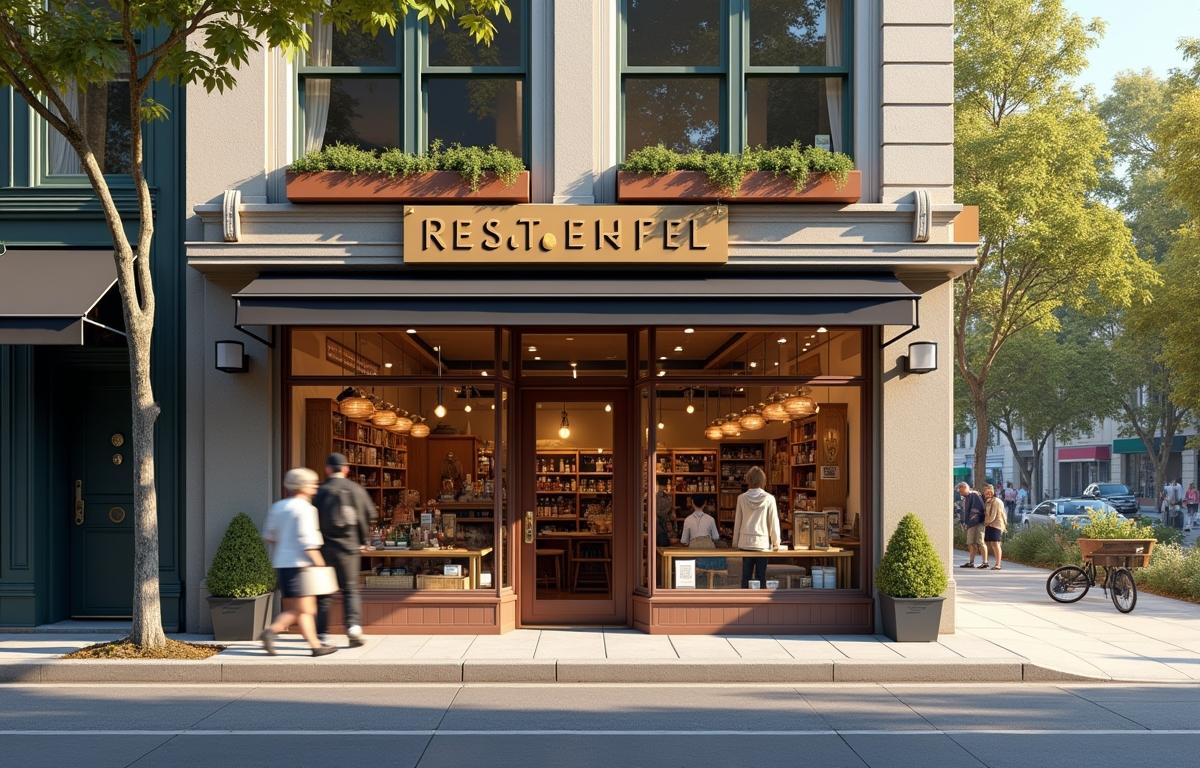Retailers can significantly benefit from integrating local SEO into their business strategies. With more consumers searching online before even stepping into a store, focusing on geographic relevance can make a huge difference. Instead of competing with global brands on broad terms, retailers can target people in nearby neighborhoods and form stronger connections. This approach not only drives foot traffic but also reinforces a sense of community among customers.
Unlike generic digital tactics, local search optimization taps into location-based strengths. Whether you operate a single boutique or manage multiple outlets, achieving top positions in local search results helps you reach the right audience precisely when they’re most likely to visit. By refining your store’s visibility, you distinguish yourself in a busy marketplace and create opportunities for meaningful customer engagement.
The Power of Local Search Optimization
Competing simply on broad keywords may spread your resources too thin. Retailers benefit from zeroing in on local keyword research to discover terms customers actually use, such as “[product or service] near me.” This approach not only streamlines your ad budget but also ensures that people who need your products will find you easily.
Creating geo-targeted content about your area can further elevate your ranking, illustrating your commitment to the local community. By strategically including location-based keywords and highlighting local news or events, you give search engines reasons to feature your business in front of potential customers. As a result, you’ll see more walk-ins and more calls asking about inventory or hours, instead of just random clicks.
Strengthening Your Retail Presence with Google My Business
Getting your shop listed on Google My Business is a smart move to boost visibility quickly. A complete profile, including photos, hours of operation, and a brief description, raises your chances of landing in the map pack. Featuring your address ensures your store appears on Google Maps listings, which makes it easier for shoppers to find exact directions with just a few taps.
Beyond that, accurate categories and contact details feed into local ranking factors and help you appear in local SERPs ahead of competitors. If you manage multiple locations, each branch should have its own listing, ensuring location-based SEO best practices are followed everywhere. These efforts reinforce your brand credibility and show potential customers that you’re ready to serve.
Driving Customer Interaction
One of the biggest advantages of a properly set up Google My Business listing is the direct line of communication it opens with your audience. Shoppers can ask questions in real time or read through existing customer testimonials. Such interactions create a feeling of familiarity before they even walk in. This level of transparency fosters trust, which is invaluable in today’s competitive environment.
NAP Consistency and Local Citations
Your Name, Address, and Phone number (NAP) need to be consistent on every platform where your business is mentioned. Mismatched or incomplete data can confuse both search engines and would-be customers. This includes local business listings on platforms like Yelp or industry-specific directories. Accurate NAP consistency shows search engines that you’re legitimate and reliable, helping you rank higher.
Local citations also reinforce credibility. Every time your shop’s details appear on relevant sites or business directories, search engines gain further confidence that you’re an established presence in your region. These mentions act like digital footprints, linking your brand to the area, which can boost search engine trustworthiness.
Maintaining Accurate Details
Regularly check all your listings to ensure that addresses, phone numbers, and operating hours are up to date. This habit is especially important if you relocate or change contact information. Tools that track local citations can be helpful, but even a quick manual update can go a long way. Customers become frustrated when they visit an outdated address, and you lose potential business.
Leveraging Near Me Searches and Geotargeting
In an era where mobile devices rule, near me searches continue to grow. Shoppers often look for the closest store offering the items they want right now. Incorporating geotargeting into your strategy makes use of these proximity based searches, aligning your brand with people actively hunting down products nearby. This not only amplifies walk-in traffic but also increases conversion rates, because the user has a more immediate intention to purchase.
Moreover, focusing on location-based keywords in your site’s content and metadata can lift your search rankings. Think about subtle ways to incorporate neighborhoods, landmarks, or city-specific tips that resonate with locals. By aligning your business with regional specifics, you not only speak the language of your audience but also stand out in local search results.
Optimizing On-Page Elements and Mobile for Local Shoppers
On-page SEO for local audiences involves incorporating location signals into meta titles, headings, and copy. Doing so helps search engines recognize your local relevance. Customers often prefer websites that load quickly and present key information without complexity, making mobile optimization for local SEO a must. If your site stalls or fails to respond well on smartphones, prospective visitors might leave in an instant.
To attract loyal customers, integrate local content marketing strategies that highlight your store’s unique angle. This could mean collaborating with local personalities or featuring timely events that matter to people in the area. It provides value to your readers and signals to search engines that you’re offering more than just promotional text, aligning with local SEO strategies to keep you visible and reputable.
Improving Site Structure for Better Engagement
A smooth site structure is essential to keep shoppers browsing. A clear menu and properly labeled categories help them find what they want fast. Embedding calls to action strategically can guide them to your store locator or newsletter sign-up pages. Such on-page tweaks enhance overall user experience while underlining your local focus.
Leveraging Reviews for Trust and Customer Engagement
Positive online reviews can be your secret weapon in building credibility. People trust comments from fellow shoppers, so reviews often influence their final decision. Encouraging customer testimonials can lead to stronger customer engagement and inspire prospective buyers to visit your store. Even addressing negative feedback publicly can display your dedication to service.
Review management goes hand in hand with local search optimization. Engaging with ratings on platforms like Google My Business or other review sites signals to search engines that you value transparency. This commitment to open dialogue can push your listing higher in local business listings while influencing your brand identity in a positive direction.
Local Link Building and Directory Submissions
Securing local backlinks from reputable sources further establishes your store as a genuine hometown presence. This might involve collaborating with charities, local influencers, or neighborhood bloggers who can showcase your brand to their audiences. Local backlink building strategies can be surprisingly effective at signaling to search engines that your store is a vital part of the community.
Directory submissions also matter for small business SEO efforts. Submitting your details to the right directories ensures that potential customers can reach you through whichever platform they trust most. Each entry serves as another digital mention, giving search engines proof of your location and relevance to local shoppers. Avoid spammy directories, though, because top-quality mentions are always better than sheer quantity.
Advantages of Being Listed Locally
Being cited in regional directories, events pages, or community calendars can expand your network beyond the usual crowd. These placements drive targeted traffic, generating leads that convert into real customers. More importantly, you become a familiar name in the community, strengthening brand loyalty in the long run.
Scheming with Schema Markup and Competition Analysis
Schema markup for local is an underused but powerful tool. It structures your site data in ways that search engines can grasp immediately, helping you appear in snippets that highlight critical information like store hours, reviews, or special offers. Doing so can improve your click-through rate, as users see your relevance right on the search results page.
Competition analysis for local SEO allows you to see what successful rivals are doing. Perhaps they’re using specific location-based keywords or focusing heavily on social media campaigns. Evaluating their activities reveals gaps in your own strategy. You can then refine your approach, from creating more geo-targeted content to strengthening your presence in certain business directories.
Staying Ahead of Local Trends
Stay tuned to shifting consumer behaviors. People might flock to an emerging neighborhood bakery, or a fresh boutique might appear nearby. Keeping up with evolving local trends means you can adjust your product range and promotional tactics before it’s too late. This awareness secures your position as a go-to store while others race to catch up.
By investing in local seo as an ongoing strategy, retail stores can remain visible, credible, and connected to their communities. Every snippet of digital presence from your Google My Business profile to on-page content works together to turn casual online browsers into actual in-store visitors. With the right mix of tactics, you’ll thrive in an ever-changing market, bringing more customers through your doors and keeping them returning for more.




